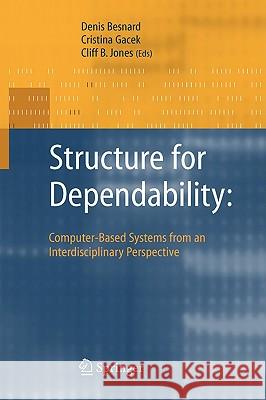Structure for Dependability: Computer-Based Systems from an Interdisciplinary Perspective » książka
Structure for Dependability: Computer-Based Systems from an Interdisciplinary Perspective
ISBN-13: 9781846281105 / Angielski / Miękka / 2005 / 306 str.
Structure for Dependability: Computer-Based Systems from an Interdisciplinary Perspective
ISBN-13: 9781846281105 / Angielski / Miękka / 2005 / 306 str.
(netto: 384,26 VAT: 5%)
Najniższa cena z 30 dni: 385,52
ok. 22 dni roboczych
Bez gwarancji dostawy przed świętami
Darmowa dostawa!
Computer-based systems are now essential to everyday life. They involve both tech- cal (hardware/software) components and human beings as active participants. Wh- ever we ?y aboard an aircraft or withdraw money from a cash point, a combination of humans, machines and software is supporting the delivery of the service. These systems and many others bene't from the miniaturisation and cost reduction of the hardware which has made it possible for computers to be embedded everywhere. An equally remarkable development is the software involved: today, systems are built which were literally unthinkable twenty or thirty years ago. Measured in terms of their function, the productivity of their creation has also advanced enormously (largely - cause of the software infrastructure). Even the dependability of the best of todays so- ware is praiseworthy when one considers the complexity of the functionality provided. Solid engineering and the increasing adoption of methods based on ?rmly established theory are to be thanked here. However, in large and complex systems, there remain major challenges to achieving dependability when complex interactions exist between technical and human components. Large and complex things are understood as assemblages of simpler components: the way these components 't together is the structure of the system. Structure can be real and physical, or a subjective mental tool for analysis.











